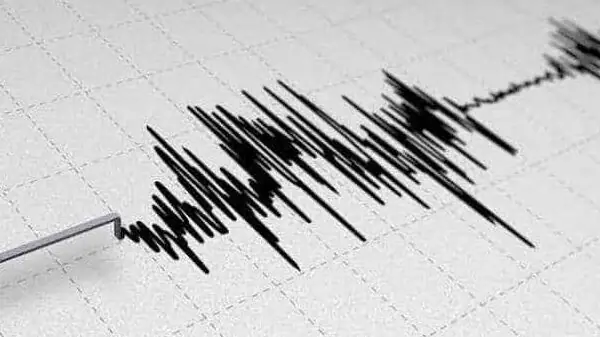On Tuesday, a powerful earthquake measuring 5.4 on the Richter scale shook Delhi-NCR and the surrounding regions, causing a wave of panic and concern among residents. The tremors were felt at 1:33 p.m., originating from the remote village of Gandoh Bhalessa in the Doda district of Jammu and Kashmir. This seismic event serves as a stark reminder of the vulnerability of certain areas to earthquakes and the need for preparedness and awareness.
The Earthquake Details
The National Centre for Seismology promptly reported the earthquake and shared specific information regarding its magnitude and location. According to their tweet, the earthquake had a magnitude of 5.4 and occurred on June 13, 2023, at 1:33:42 p.m. Indian Standard Time (IST). The coordinates provided indicate that the quake originated at latitude 33.15 degrees north and longitude 75.82 degrees east, with a depth of 6 kilometers. The epicenter of the earthquake was within the Doda region of Jammu division, approximately 30 kilometers beneath the Earth’s surface.
Impact and Aftermath
Fortunately, no immediate reports of casualties or damage to property have been received in the aftermath of the earthquake. However, the incident serves as a reminder of the region’s vulnerability to seismic activity. Jammu and Kashmir, located in a seismologically sensitive zone, has experienced devastating earthquakes in the past. The most notable of these was a 7.6 magnitude earthquake that struck on October 8, 2005, resulting in the loss of over 80,000 lives on both sides of the Line of Control (LoC).
Preparedness and Safety Measures
Given the seismological history of the region, it is crucial for residents and authorities to prioritize preparedness and safety measures. Here are some key steps that individuals and communities can take:
1. Education and Awareness
Raising awareness about earthquake preparedness is vital to ensure that people understand the risks and know how to respond effectively during and after an earthquake. This includes educating the public about the appropriate actions to take, such as “Drop, Cover, and Hold On,” which involves taking cover under sturdy furniture or against an interior wall.
2. Building Codes and Regulations
Implementing and enforcing robust building codes and regulations is essential to enhance the structural resilience of buildings and infrastructure. Constructing earthquake-resistant buildings and retrofitting existing structures can significantly minimize the potential damage caused by seismic events.
3. Emergency Response Planning
Developing comprehensive emergency response plans at the community and organizational levels is crucial. These plans should include strategies for evacuation, medical assistance, and communication during and after an earthquake. Conducting drills and exercises can help ensure that everyone knows their roles and responsibilities in the event of a seismic event.
4. Early Warning Systems
Investing in and deploying early warning systems can provide valuable seconds to minutes of advance notice before an earthquake strikes. This can enable individuals to take immediate protective actions and give authorities additional time to initiate emergency response efforts.
5. Public-Private Partnerships
Collaboration between the public and private sectors is essential for effective earthquake preparedness and response. Governments, businesses, and community organizations should work together to develop strategies, share resources, and coordinate efforts to mitigate the impact of earthquakes.
The recent 5.4 magnitude earthquake that jolted Delhi-NCR and neighboring areas serves as a reminder of the unpredictable nature of seismic activity. While no casualties or damage have been reported thus far, it is crucial for individuals, communities, and authorities to remain vigilant and proactive in their earthquake preparedness efforts. By raising awareness, implementing building codes, and developing comprehensive response plans, we can minimize the potential impact of earthquakes and protect lives and infrastructure.
Frequently Asked Questions (FAQs)
Q1: How long did the recent earthquake last?
The duration of the earthquake can vary depending on its magnitude and proximity to the affected area. In most cases, earthquakes last for a few seconds to a minute.
Q2: Are there any immediate dangers after an earthquake?
After an earthquake, there may be immediate dangers such as aftershocks, landslides, or the potential for structural collapse. It is essential to remain cautious and follow safety guidelines until authorities declare the situation safe.
Q3: Can earthquakes be predicted?
While scientists continue to study earthquakes, accurate prediction of specific earthquakes is currently not possible. However, advances in monitoring and early warning systems have improved our ability to anticipate seismic activity to some extent.
Q4: What should I do during an earthquake?
During an earthquake, it is crucial to remember the “Drop, Cover, and Hold On” protocol. Drop to the ground, take cover under sturdy furniture or against an interior wall, and hold on until the shaking stops.
Q5: How can I contribute to earthquake relief efforts?
If you would like to contribute to earthquake relief efforts, consider donating to reputable organizations that provide assistance and support to affected communities. Check with local authorities or trusted relief organizations for information on how to contribute effectively.





